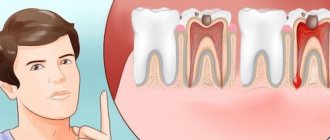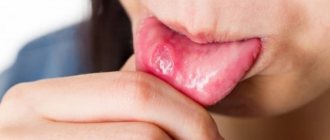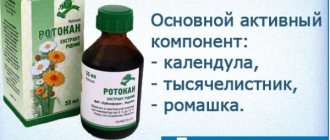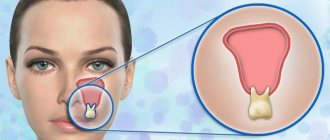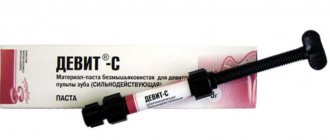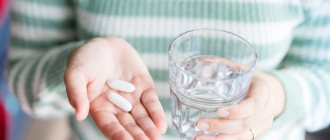According to the International Association for the Study of Pain (IASP), “Pain is an unpleasant sensation and emotional experience associated with actual or potential tissue damage or described by a person in terms of such damage.” Approximately 40% of general practitioner visits are due to mild to moderate acute pain, and more than 70% of emergency department visits are due to the patient having severe acute pain [1]. Pain management plays an important role in the work of many medical specialties. Adequate relief of acute pain in most cases helps prevent its chronicity [2]. In such a situation, the most popular tool for analgesic therapy is non-steroidal anti-inflammatory drugs (NSAIDs) [3,4]. They belong to different chemical classes and therefore have different pharmacokinetic and pharmacodynamic properties [5]. A rational choice of NSAIDs involves taking into account the main properties of the drug (the predominance of analgesic or anti-inflammatory activity), as well as possible negative effects (the risk of developing NSAID gastropathy and decompensation of cardiovascular diseases) [6]. One of the NSAIDs widely used in Russia is nimesulide. Nimesulide was introduced into clinical practice in the early 1980s. During the period of use of drugs based on it, they have established themselves as effective, well-tolerated and affordable drugs [7]. Recently, studies are also underway examining the role of nimesulide as an additional treatment for COVID-19. The reason for these studies was a finding suggesting that nimesulide may be a potent inhibitor of the B0AT1 subunit of the ACE2 receptor, which is a target of SARS-CoV-2 [8].
Nimesulide has a balanced effect on both forms of COX with predominant inhibition of COX-2 [5].
Thanks to this, on the one hand, the risk of developing gastrointestinal complications is significantly reduced compared to that when taking non-selective NSAIDs, and on the other hand, there is no significant cardiovascular toxicity characteristic of highly selective COX-2 inhibitors - coxibs [9]. The nimesulide molecule, unlike the molecules of other NSAIDs, has alkaline properties. This allows the substance to easily penetrate into areas of inflammation and accumulate there in higher concentrations than in blood plasma. Already 30 minutes after oral administration, the concentration of the drug in the blood reaches 25–80% and the analgesic effect begins to develop. Peak concentrations and, therefore, maximum analgesic effect are observed one to three hours after administration [7,10].
Nise® (nimesulide) is a drug of the NSAID class. It is firmly entrenched in the arsenal of rheumatologists, internists, family doctors and doctors of other specialties. The drug combines high analgesic and anti-inflammatory potential and a good safety profile. In addition, it is available in different dosage forms [7, 11]. Innovative dosage form (3D effect) of Nise® tablets from Dr. Reddys has become an undeniable advantage in the speed of onset of the analgesic effect compared to other generic nimesulide [12]. Pharmaceutical workers must not forget that all drugs for systemic use containing nimesulide are available with a doctor’s prescription [11]. To relieve pain in the back, joints, and muscles, it is advisable to recommend that the patient use external forms of NSAIDs in the form of gels, ointments, and creams (all of which are approved for over-the-counter release). The vast majority of non-steroidal drugs produced in forms for external use are non-selective drugs [11]. The only representatives of selective NSAIDs in the segment of external forms are nimesulide preparations (Nise® Activegel). Nise® ActiveGel also contains an effective conductor, dimethyl sulfoxide, which improves the penetration of the drug into tissues [13, 14].
Conclusion
NISE® is a modern selective COX-2 analgesic for the relief of both acute and chronic pain, which can be used in the treatment of many diseases accompanied by acute inflammation: arthritis of various origins, osteochondrosis with radicular syndrome, myalgia, inflammation of ligaments, tendons, bursitis, post-traumatic inflammation soft tissues, as well as for headaches, toothache and primary dysmenorrhea [10, 14].
Literature
- Kotova O.V., Akarachkova E.S. Acute pain syndromes in neurological practice // Effective pharmacotherapy. 2014. No. 31
- Eliseev M.S. Treatment of acute pain //EFFECTIVE PHARMACOTHERAPY. Rheumatology, traumatology and orthopedics. 2022. No. 2
- RATIONAL USE OF NON-STEROID ANTI-INFLAMMATORY DRUGS. Clinical guidelines 2022. doi: 10.14412/1995-4484-2018-1-29
- Shukhov V.S. About non-steroidal anti-inflammatory drugs. //Attending doctor. 2001-02-24.
- Kotova O. V. Are there differences between non-steroidal anti-inflammatory drugs? Nimesulide in the spotlight // Attending physician. 09-11-2016
- Marusenko I.M. The choice of non-steroidal anti-inflammatory drugs for the treatment of arthritis on an outpatient basis. //EFFECTIVE PHARMACOTHERAPY. Rheumatology, traumatology and orthopedics. No. 1 (10)
- Karateev D.E., Luchikhina E.L., Tangieva A.R. Choice of non-steroidal anti-inflammatory drug for symptomatic treatment of rheumatic diseases: focus on nimesulide. //EFFECTIVE PHARMACOTHERAPY. Rheumatology. Traumatology. Orthopedics. No. 2 (19)
- Mariafrancesca Scalise, Cesare Indiveri Repurposing of nimesulide, a potent inhibitor of the B0AT1 subunit of the SARS-CoV-2 receptor, for use as a therapeutic adjuvant for COVID-19. //Manage Pain. 2022. No. 3
- Morozova T. E., Shmarova D. G., Rykova S. M. The choice of non-steroidal anti-inflammatory drugs in rheumatological patients with concomitant cardiovascular diseases // Attending physician. 2016-08-17
- Instructions for medical use Nise® tablets 100 mg, No. P N012824/03
- https://grls.rosminzdrav.ru/Default.aspx
- Review of international literature on nimesulides: 3D differentiation of the drug Nise // Manage Pain, 2022, No. 1.
- https://nisepro.rf/active-gel
- Instructions for use of the medicinal product for medical use NIZE®, P N012824/02
Interested in the article? You can find out even more in the section Working in a pharmacy
What does Nimesulide help with and indications for use?
Before using the drug, consult a doctor.
It is important to remember that Nimesulide does not affect the causes of diseases and does not treat them. This drug is symptomatic and is used to relieve and alleviate clinical manifestations.
The main indications for taking the drug are:
- Diseases of the musculoskeletal system with severe pain (arthritis of various origins, including rheumatoid, bursitis, tendonitis, osteoarthritis, myalgia).
- Early postoperative period.
- Headache or toothache.
- Periodic pain in women.
Action of Nimesil
Nimesil for toothache, when entering the body, inhibits the formation of prostaglandins. The latter are chemical compounds, the synthesis of which occurs in almost all tissues, including blood vessels. Prostaglandins do not have a direct effect on the course of pain. However, they enhance the effect of compounds that provoke the development of the inflammatory process.
Nimesil is prescribed for toothache caused by:
- Caries
- Pulpitis
- Gum pathologies and other dental ailments
At the same time, the medicine suppresses the development of the inflammatory process. It is important to understand that Nimesil for toothache is a temporary remedy. It is not able to eliminate the disease that caused the discomfort. To eliminate the latter, other measures are necessary.
Contraindications
The drug is prohibited for gastric and duodenal ulcers, especially in the acute stage, for bleeding disorders and increased bleeding, Crohn's disease, bronchial asthma, inflammatory processes in the intestines, polyposis of the nasal cavity and paranasal sinuses.
Also, the use of Nimesulide is limited in case of individual intolerance to NSAIDs, severe chronic, renal and liver failure, in children under 12 years of age, during pregnancy and lactation.
Possible side effects
Nimesil in some cases provokes the appearance of many side effects, manifested in the form of:
- Attacks of headaches and dizziness
- Problems with stool
- Nausea and vomiting
- Increased sweating
- Allergic reaction in the form of skin rashes
- Anemia
- Decreased vision
- Increased blood pressure
- Increased nervousness
- Insomnia
- Shortness of breath
- Stomatitis and hepatitis
- Urinary retention
Basically, the negative consequences that occur when taking Nimesil are associated with the functioning of the gastrointestinal tract. Side effects manifest themselves in the form of diarrhea, constipation, pain localized in the abdomen.
Side effects and overdose
Taking Nimesulide in some cases may be accompanied by the development of unwanted side reactions. These include:
- From the side of the central nervous system: dizziness, anxiety, headaches, nightmares.
- Urinary system: decreased amount of urine excreted, hematuria, exacerbation of chronic renal failure.
- From the gastrointestinal tract: dyspeptic syndrome (nausea, vomiting, stool disorders), abdominal pain, flatulence, bleeding, gastritis, ulcerative lesions, jaundice as a result of cholestasis, increased transaminases.
- Skin: increased sweating and allergic reactions of varying severity (itching, urticaria, swelling, Stevens-Johnson syndrome).
- From the cardiovascular system: hypotension, increased heart rate.
- Hematopoietic organs: anemia, pancytopenia, increased clotting time.
- Respiratory system: shortness of breath, spasm of smooth muscles in the bronchi, exacerbation of COPD or bronchial asthma.
- Organ of vision: blurred perception.
Symptoms of overdose are similar to those of adverse reactions. They develop due to non-compliance with doctor’s instructions and uncontrolled use of Nimesulide.
In case of overdose, it is necessary to discontinue the drug, lavage the stomach to clean water and take activated carbon at the rate of 1 tablet per 10 kg of body weight.
Method of administration
Nimesil is used for tooth pain only after consultation with a doctor and with his direct participation. One of the main advantages that the medicine has is its release form.
The suspension is prepared from powder according to the instructions
Nimesil is produced in the form of a powder intended for the preparation of a suspension. This solution is quickly absorbed, resulting in relief within 30 minutes. During this period, the concentration of the active substance reaches 50% of the maximum possible.
Before you start using Nimesil, it is recommended that you read the attached instructions. The drug is approved for use subject to a number of conditions:
- The patient's age is over 12 years
- The product is taken only after meals
- The prepared solution is not intended for long-term storage
- The powder is dissolved in half a glass of warm water
The drug is taken daily no more than twice a day. At least 12 hours must pass between each dose.
Interactions
Nimesulide increases the activity of antiplatelet agents and anticoagulants. Concomitant use of this drug with diuretics reduces their effectiveness, which can lead to edema, especially in patients with hypertension and renal failure.
Nimesulide also increases the toxicity of cyclosporine and methotrexate. And its simultaneous use with GCS and serotonin reuptake inhibitors significantly increases the risk of bleeding in the digestive tract.
Dangers of taking Nimesil
Many patients confirm the high effectiveness of Nimesil for relieving toothache. However, according to several studies conducted on this medicine, it can cause a number of negative effects caused by toxicological effects on the kidneys and liver. Therefore, the sale of Nimesil was banned in the United States, and in European countries the drug is sold with a mark prohibiting its administration to children.
Data from various studies have shown that negative consequences from the action of the drug occur only if the specified conditions of administration are not observed and if the prescribed dosage is exceeded.
When purchasing the drug, you should be advised about the specifics of use and contraindications of Nimesil.
Dentists recommend taking Nimesil to relieve tooth pain only in cases where other medications that have a safe effect on the body are not able to eliminate the pain. In addition, the drug is contraindicated for long-term use, since the liver is subjected to severe stress.
During studies of the drug's effect, no other negative effects were identified. Only a number of subjects refused to continue taking the medication due to the fact that they were diagnosed with disorders of the digestive system. Moreover, cases of severe liver damage have not yet been reported in medical practice.
"Magic" pills
There is a group of drugs collectively called non-steroidal anti-inflammatory drugs (NSAIDs), which we all have taken at least once in our lives, and many regularly. These are drugs that have analgesic, anti-inflammatory and/or antipyretic effects. Examples include Aspirin, Nurofen, Nice, Ketanov, Ketoprofen and others. Considering the “magical effects” of their action - relieving inflammation, pain and fever - they are prescribed by almost everyone, everyone, always. Prescribed by traumatologists, rheumatologists, therapists, ENT specialists, dentists. Plus, they can be purchased completely freely at any pharmacy. But, along with the “magical properties”, these drugs have a number of side effects that can be divided into 2 groups: cardio risks and gastro risks. Actually, gastrorisks will be discussed in this article.
Comparison of addiction between OKI and Nimesil
Like safety, addiction also involves many factors that must be considered when evaluating a drug.
So, the totality of the values of such parameters as “syndrome o” in OKI is quite similar to the similar values in Nimesil. Withdrawal syndrome is a pathological condition that occurs after the cessation of intake of addictive or dependent substances into the body. And resistance is understood as initial immunity to a drug; in this it differs from addiction, when immunity to a drug develops over a certain period of time. The presence of resistance can only be stated if an attempt has been made to increase the dose of the drug to the maximum possible. At the same time, the OCI syndrome values are quite small, however, the same as with Nimesil.
Reviews
In this section you can read user reviews about the drug Nimesulide and its analogues, the effectiveness of the drug, side effects, and features of administration.
Nimesulide is a drug with a pronounced analgesic effect, which occurs by eliminating the inflammatory reaction. The medicine helps eliminate toothache, but has only a symptomatic effect.
To prevent the recurrence of the disease, you need to visit the dentist and eliminate the reason why it occurs.
Tablets for toothache: how to choose the right one
As you can easily see, the list of painkillers is long. Remember that painkillers do not eliminate the cause of pain, but only relieve the symptom. To eliminate the cause of tooth pain, a visit to the doctor and proper treatment are necessary.
Remember that toothache pills do not work the same for everyone. If diclofenac helped your friend, this does not mean that you can take the drug with the same success. Ketorolac or a combination pain reliever may be right for you.
When choosing an anesthetic drug, it is also worth considering the nature of the pain. If the tooth pain is mild, then you can cope with the help of antispasmodics. Attacks of severe pain may require the use of powerful medications that can only be purchased with a doctor's prescription.
Important! Read the instructions for the medications carefully. Particular caution should be exercised by persons with chronic diseases due to the high risk of side effects when taking medications. The information we provide about the 10 most popular medications for toothache is generalized and incomplete, so read the instructions and consult your doctor.
Some numbers
Some statistics. In the UK, approximately 24 million NSAIDs are prescribed per year. 70% of people over 70 years of age take NSAIDs once a week, and 34% daily. In the United States, up to 6 billion worth of NSAIDs are sold annually. As a result, the risk of developing gastrointestinal bleeding (GIB) increases 3–5 times, perforation by 6 times, and the risk of death from complications by up to 8 times. Up to 40–50% of all cases of acute gastrointestinal tract infections are associated with NSAIDs.
This problem is also relevant in our country, for example, according to the Scientific Center for Cardiovascular Surgery named after. A.N. Bakulev, out of 240 patients taking aspirin daily, even in small doses, gastroscopy revealed lesions of the stomach and 12 p.c. in 30% (of which ulcers - in 23.6%, erosions - in 76.4%). A similar picture was observed among colleagues from the All-Russian Research Institute of Rheumatology of the Russian Academy of Medical Sciences - in 2126 patients taking NSAIDs without “covering” (protection) of the stomach, erosions and ulcers of the gastroduodenal zone were found in 33.8% of cases. These are very impressive and dramatic numbers of complications from taking NSAIDs, considering the number of people using these drugs in developed countries.
Nimesil or Ibuprofen - which is better?
Of the variety of NSAIDs (painkillers, anti-inflammatory drugs), these drugs can be called one of the safest.
Ibuprofen is traditionally considered optimal in terms of the ratio of effectiveness and frequency of side effects, and therefore is the drug of choice for high fever and moderate pain in childhood.
Although Nimesil is not used until the age of 12, it also compares favorably with other similar NSAIDs in its selectivity of action. Let's compare their advantages and disadvantages.
There are contraindications, consult a specialist
The main active ingredient of Italian Nimesil is nimesulide. This is a fairly powerful anti-inflammatory agent with a moderate analgesic effect.
Due to its selective effect on enzymes responsible for pain and inflammation, Nimesulide is much less harmful to the mucous membranes of the stomach and intestines compared to non-selective NSAIDs.
The duration of action is similar to ibuprofen, but according to clinical studies it begins to act faster.
"Nimesil" 100 mg (30 pcs.)
Most often used for joint pain (arthralgia) of various origins and injuries of the musculoskeletal system.
The selectivity of Nimesil's action allows it to be taken for a long time by people with chronic joint diseases (arthritis, osteoarthritis), however, periodic monitoring of kidney function is necessary.
Parallel use of gastroprotectors is also advisable if long-term symptomatic treatment with nimesulide is necessary.
Sachet bags with Nimesil granules
Available in the form of separate bags with granules for preparing a solution. Among the direct analogues of Nimesil are such drugs as: Nemulex - also granules (Russia), Nimulid - tablets (India), Nise - tablets or gel (India).
Ibuprofen is the most popular antipyretic after aspirin and paracetamol with a good analgesic effect. Has extensive experience in use in medicine and pediatrics in particular.
Unlike his opponent, he cannot boast of selective action, but he himself acts softer. In children's practice it can be used from a very early age in the form of suspensions.
For adults, the standard dose per dose is 200-400 mg.
Increased dosage of ibuprofen for adults (400 mg)
The scope of ibuprofen is much wider. Most often used as an antipyretic. Available in a variety of forms under many trade names (see 5 Popular Ibuprofen Products).
Ibuprofen tablets 200 mg
What's stronger?
The strength of the analgesic effect of both drugs is average, but there are still differences. Thus, several European independent studies compared the analgesic effect of nimesulide or ibuprofen tablets after removal of teeth and tonsils.
The results showed approximately similar pain-relieving ability, but nimesulide had a faster onset of action (about 15 minutes) in dentistry, and the recovery period after tonsillectomy (surgery to remove the tonsils) was slightly faster. We can conclude that Nimesil will be preferable for adults, in particular for toothache. For children under 12, the clear choice is ibuprofen.
Is it possible to take ibuprofen and Nimesil at the same time?
It is not advisable to take different NSAIDs orally together. Thus, Nimesil is strictly contraindicated for use with paracetamol due to its toxic effect on the liver.
There is no exact compatibility data for ibuprofen, so their parallel use is also best avoided. If there is an urgent need, you can wait until the half-life of nimesulide passes - about 5-6 hours and take Ibuprofen after Nimesil.
However, if you have chronic stomach problems (gastritis, ulcers), then doing this is highly undesirable.
Nimesulide
Undesirable side effects can be minimized by using the drug in the minimum effective dose with the minimum duration of use necessary to relieve pain.
There is evidence of very rare cases of serious reactions from the liver, including cases of death, associated with the use of nimesulide-containing drugs. If symptoms similar to signs of liver damage appear (anorexia, itching, yellowing of the skin, nausea, vomiting, abdominal pain, dark urine, increased activity of liver transaminases), you should immediately stop using the drug Nimesulide and consult a doctor. Repeated use of Nimesulide in such patients is contraindicated.
Reactions from the liver, in most cases of a reverse nature, have been reported with short-term use of the drug.
While using the drug Nimesulide, the patient should refrain from taking other analgesics, including NSAIDs (including selective COX-2 inhibitors).
The drug Nimesulide should be used with caution in patients with a history of gastrointestinal diseases (ulcerative colitis, Crohn's disease), since exacerbation of these diseases is possible.
The risk of gastrointestinal bleeding, peptic ulcer/perforation of the stomach or duodenum increases in patients with a history of gastrointestinal ulceration (ulcerative colitis, Crohn's disease), as well as in elderly patients, with an increase in the dose of NSAIDs, so treatment should begin with the lowest possible dose. In such patients, as well as in patients who require the simultaneous use of low doses of acetylsalicylic acid or other drugs that increase the risk of complications from the gastrointestinal tract, it is recommended to additionally prescribe gastroprotectors (misoprostol or proton pump blockers).
Patients with a history of gastrointestinal disease, especially older patients, should report new gastrointestinal symptoms (especially symptoms that may indicate possible gastrointestinal bleeding) to their physician.
Nimesulide should be administered with caution to patients taking drugs that increase the risk of ulceration or bleeding (oral corticosteroids, anticoagulants such as warfarin, selective serotonin reuptake inhibitors or antiplatelet agents such as acetylsalicylic acid).
If gastrointestinal bleeding or gastrointestinal ulceration occurs in patients taking Nimesulide, treatment with the drug must be stopped immediately.
Given reports of visual impairment in patients taking other NSAIDs, if any visual impairment occurs, use of Nimesulide should be immediately discontinued and an ophthalmological examination performed.
The drug may cause fluid retention, therefore, in patients with arterial hypertension, renal and/or heart failure, Nimesulide should be used with extreme caution. If the condition worsens, treatment with Nimesulide should be discontinued.
Clinical studies and epidemiological data suggest that NSAIDs, especially at high doses and with long-term use, may lead to a small risk of myocardial infarction or stroke. There is insufficient data to exclude the risk of such events when using nimesulide.
The drug may cause fluid retention in the body.
Patients with arterial hypertension, renal and/or heart failure, coronary heart disease, peripheral arterial disease and/or cerebrovascular diseases, with risk factors for the development of cardiovascular diseases (for example: hyperlipidemia, in smokers), Nimesulide should be used with caution. . If the condition worsens, treatment with Nimesulide should be discontinued.
If signs of a “cold” or acute respiratory viral infection occur while using the drug Nimesulide, the drug should be discontinued.
Nimesulide can change the properties of platelets, so caution must be exercised when using the drug in people with hemorrhagic diathesis, however, the drug does not replace the preventive effect of acetylsalicylic acid in cardiovascular diseases.
Elderly patients are especially susceptible to adverse reactions to NSAIDs, including the risk of life-threatening gastrointestinal bleeding and perforation, and decreased renal, hepatic, and cardiac function. When taking the drug Nimesulide for this category of patients, proper clinical monitoring is necessary.
There is evidence of rare cases of skin reactions (such as exfoliative dermatitis, Stevens-Johnson syndrome, toxic epidermal necrolysis) when taking NSAIDs, including nimesulide. At the first manifestations of a skin rash, damage to the mucous membranes or other signs of an allergic reaction, Nimesulide should be stopped immediately.
Medicines in dental practice. Part II
In the last post, we talked about the general principles of prescribing medications in outpatient dentistry. The topic is still relevant, it can be commented on and discussed.
Today I propose to take a more specific look at painkillers and anti-inflammatory drugs in dental practice, and at the end of this post you will find a small gift.
In order not to turn all this into a dull lecture on pharmacology, I will tell you only about those drugs that I use myself and for which I have my own clinical observations.
Attention!
This entry is not a doctor’s prescription, not a recommendation for patients, but a simple information message, a generalization of one’s own experience with medications. Never take medications without a doctor's prescription.
So, let's begin.
General information about pain medications.
All medications that we call “painkillers” (analgesics) can be divided into two large groups.
First group
- narcotic analgesics: morphine, heroin, fentanyl, sodium hydroxybutyrate, etc.
A distinctive feature is the effect, first of all, on the central nervous system (CNS), hence the ability to relieve even very severe pain.
The disadvantages are addiction, sedation, mental or physical dependence, depression of vital CNS centers up to cardiac and respiratory arrest.
In outpatient dentistry, narcotic analgesics are not used. For obvious reasons, drug use should be supervised by a doctor.
Second group
- non-narcotic analgesics: analgin, ibuprofen, butadione, nimesulide, etc.
Myths that we encounter in daily practice
Myth 1. Using NSAID drugs in the form of suppositories is less aggressive for the stomach than taking pills
This is 100% a myth. The pathogenic, destructive effect of the drug is realized through the blood, delivering it through the vessels to the stomach.
Myth 2. Medicines from the group of antacids - Rennie, Maalox, Phosphalugel and H2-blockers (Ranitidine and Famotidine) can be used as “gastroprotectors”
In this case they are not effective.
Myth 3. You can't take proton pump inhibitors regularly
The fact is that if an elderly person has been prescribed an anti-inflammatory drug for life, it is absolutely pointless to prescribe gastroprotection for a month. In such cases, medications should be taken strictly in parallel.
Myth 4. Food products (jelly, etc.) can act as “gastroprotectors”
We will leave this myth as absolutely fantastic without comment.
NSAID gastropathy
In the scientific literature, this problem is called “NSAID gastropathy.” The term was first proposed in 1986 to distinguish specific damage to the gastric mucosa that occurs with long-term use of NSAIDs from classic peptic ulcer disease.
The difference between NSAID gastropathy and peptic ulcer disease can also be traced by the affected area. Most often, ulcers can be seen in the stomach, and not in the duodenum. Plus, the changes are more common in older people than in younger people.
Nise or ibuprofen: which is better and what is the difference (differences in composition, reviews from doctors)
Nonsteroidal anti-inflammatory drugs (NSAIDs) are used by specialists in all areas of medicine to relieve pain and inflammation. Only a doctor can prescribe Nise or Ibuprofen, choosing the drug that will cause the least harm to the patient’s health. The choice of remedy will depend on the age of the patient and the nature of the disease.
Only a doctor can prescribe Nise or Ibuprofen, choosing the drug that will cause the least harm to the patient’s health.
Characteristics of Nise
The active ingredient of the drug is nimesulide. Auxiliary:
- microcrystalline cellulose;
- corn starch;
- calcium hydrogen phosphate;
- sodium starch glycolate;
- magnesium stearate;
- anhydrous colloidal silicon and purified talc.
The active ingredient of the drug is nimesulide.
Nise is produced in the form:
- tablets;
- gel;
- suspensions for children.
Comparison of the effectiveness of OKI and Nimesil
The effectiveness of OCI is quite similar to Nimesil - this means that the ability of the drug substance to provide the maximum possible effect is similar.
For example, if the therapeutic effect of OCI is more pronounced, then using Nimesil even in large doses will not achieve this effect.
Also, the speed of therapy - an indicator of the speed of therapeutic action - is approximately the same for OCI and Nimesil. And bioavailability, that is, the amount of a drug reaching its site of action in the body, is similar. The higher the bioavailability, the less it will be lost during absorption and use by the body.
